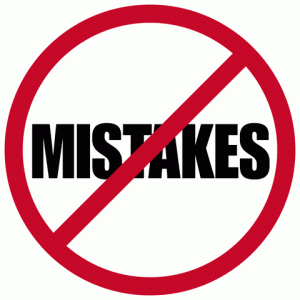The Three Key Steps to Building Your Content Strategy
Unless you have a solid SEO content strategy, all of the content that you create for your website is just guesswork. The content might do an outstanding job of increasing your search engine rankings and driving customers to your site, or it might be completely useless. Developing a strategy that matches your overall online marketing goals is critical to making your content do real work for you and actually help you meet your SEO goals. It can also help you justify your SEO activities to other people in the organization without intimate knowledge of online marketing.
Three Parts of Every Great Content Strategy
1. Set your goals for your content campaign and the tactics you’ll use to reach them.
2. Show different types of content that are verifiably proven to be successful to use as models for future content development.
3. Convince others in the organization that content is about more than keywords and that it can serve as an education resource for customers.
Three Steps to Building Your Content Strategy
Step 1: Performing content inventory
The first step to take in building SEO content strategy is to do a content inventory of the items you currently have on your site. How long this takes will depend on the number of pages and items on your current site. However, it doesn’t need to be an arduous task. You can automate much of this process instead of having to manually hunt for content on a page-by-page basis.
Chances are that your site is build around a site map that breaks your pages out by categories. You can discover these content groups by using a site crawler like Screaming Frog. Once you do this, you can review your groups by applying some common sense. Ask if the groups share common expected visitor responses and are small enough that you can reasonably work with them.
Step 2: Gathering data
Once you’ve categorized your current content, you need to analyze how it is performing. There are many factors that are overly emphasized by some SEO experts such as total page views, time spent on a page and bounce rates. You’ll get a stronger sense about the performance and potential power of your content by looking at social factors such as:
- Number of Facebook Likes, shares and comments
- Posts about the content on other social media sites like LinkedIn and Twitter
- Votes and +1s on social media sites such as Reddit and Google
You can also look at the pages themselves to see if it’s received reviews or comments from outside readers. Finally, you can use a range of analytical tools to track readers’ movements after reading a piece of content to see if they directly or indirectly lead to sales and conversions.
Language data is also an important piece of the puzzle. Track certain elements of each page on content such as:
- Total words per page
- Having paragraph, title and description tags
- The reading level and ease of the content through standards such as Flesch-Kincaid
- The overall usage of headings
- OGP (Facebook) and Twitter markups
Step 3: Evaluating your conclusions
Take a hard look at the data you’ve collected. You can usually find some interesting trends based on your data that will inform your overall SEO content strategy. You might discover that certain keywords in the title generate a high number of social media shares. Or that the length of an article is related to how popular it is. Use these trends to come up with a clear content strategy that leverages these stats in order to make it easier for people without SEO knowledge to know why you are approaching content in a certain way.
 Posted on October 16, 2013
Posted on October 16, 2013
 Posted on October 15, 2013
Posted on October 15, 2013
 Posted on October 10, 2013
Posted on October 10, 2013

 Posted on September 26, 2013
Posted on September 26, 2013
 Posted on June 17, 2013
Posted on June 17, 2013
 Posted on May 20, 2013
Posted on May 20, 2013
 Posted on May 15, 2013
Posted on May 15, 2013